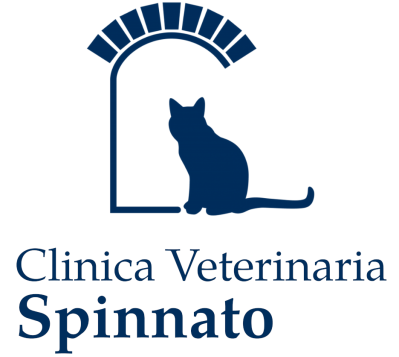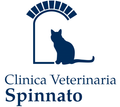Frequently Asked Questions
Feline Hyperthyroidism
Frequently Asked Questions
What is hyperthyroidism?
Visit the Hyperthyroidism page to learn more.
Do all hyperthyroid cats have a thyroid tumour?
Yes, all hyperthyroid cats have a thyroid tumour (benign in 97% of cases and malignant in 3%).
What are the treatment options for feline hyperthyroidism?
Why is treatment with Iodine 131 considered the best?
Treatment with Iodine 131 cures hyperthyroid cats and does not have risky side effects for the cat’s life as can occur with surgery or drug therapy. It is considered by all to be the first-choice treatment for feline hyperthyroidism.
Is my cat too old for treatment with Iodine 131?
Hyperthyroid cats can be successfully treated with Iodine 131 at any age, provided they do not suffer from other serious potentially life-threatening conditions. For this reason, before treatment with Iodine 131, the cat undergoes several thorough examinations.
How many days does my cat need to stay hospitalised after Iodine 131 administration?
The normal hospitalisation period for a cat undergoing Iodine 131 therapy is from 10 to 28 days. After the hospitalisation period, the cat can return home cured without any risk of radiation contamination to the owner. Due to the nature of the treatment, owners are not allowed to visit their cats. During their stay, cats are fed and monitored daily by licensed veterinarians and Dr Spinnato. They are also kept under observation via surveillance cameras. If you wish, you can call us during regular working hours to get information about your cat.
What are the differences between therapy with thiamazole and therapy with iodine-131?
Therapy with iodine-131 cures hyperthyroid cats and does not have risky side effects for the cat’s life. Therapy with an antithyroid drug like thiamazole does not cure the cat, and the thyroid tumour continues to grow. Many cats after a few years develop very large thyroid tumours, and some benign tumours transform into malignant tumours (thyroid carcinomas). A big misconception is believing that treatment with an antithyroid drug costs less than therapy with iodine-131. Cats undergoing therapy with an antithyroid drug require careful and frequent monitoring (visits, blood tests, lab exams, ultrasounds...) to evaluate the therapeutic effectiveness and possible development of side effects. The antithyroid drug, which must be administered twice daily for life, will need to have its dosage increased over time and eventually will no longer control the symptoms, leading to the cat’s death. When adding up the cost of the drug (for 2–3 years) and the related exams and visits, the total amount is very similar to the cost of treatment with iodine-131. Treatment with iodine-131 may cost a little more, but the cat is cured with a single dose of the radiopharmaceutical and no longer needs frequent monitoring. The expense can also be comfortably paid in instalments.
How is iodine-131 administered?
Iodine-131 is administered with a microcapsule that is ingested with a small bite of food.
How will my cat be cared for during hospitalisation? Where will it be housed?
After the administration of iodine, the cat’s body eliminates most of the iodine-131 dose that is not retained by thyroid cells through urine, faeces, and saliva. As a result, a period of isolation (28 days) is necessary to limit contact until the radioactivity level reaches safe limits. Your cat will have a large and comfortable hospitalisation box. The room where the box is located is a special room, with walls and a ceiling that protect against radiation. It is a room with several complete air exchanges every hour, controlled temperature, and constant lighting with varying intensity: 12 hours of daylight and 12 hours of dim night lighting. Twice a day, our staff, who are specially trained in handling radioactive substances, will personally check on your cat, clean the litter box, and provide food and water. For the rest of the time (day and night), your cat will be monitored through cameras that allow close observation to ensure it is doing well. To minimise staff exposure, during the hospital stay no medicines will be administered unless essential for your cat’s health (for example, monthly flea treatments will be skipped). There are strict radiation safety guidelines that must be followed before your cat can leave the isolation unit and return home. Each day, your cat’s body and litter box will be monitored with a Geiger counter to check radiation levels. The Geiger is simply passed over your cat’s body and litter box. At discharge, there will be no further risk to you or your family, and your cat can return home. Before discharge, your cat will be examined, a blood sample will be taken, a discharge letter will be provided, and you will receive instructions to follow at home.
When should I take my cat back to the veterinarian once we’re home?
If your cat is doing well, we recommend taking them to your veterinarian for a check-up and a blood test (to check thyroid hormones and overall health) 3 and 6 months after returning home, and then every 6 months thereafter. We recommend performing a complete blood count, a biochemical profile, a urinalysis, and thyroid hormone tests (TT4, fT4, TSH). Of course, if your cat is not feeling well, we advise taking them to your veterinarian immediately. If your veterinarian sends us the test results and a brief medical history via email, Dr. Spinnato can send you her observations and advice. After 6 months from the treatment, if you would like your cat to be examined and have blood tests done at the Spinnato Veterinary Clinic, contact us to make an appointment. The visit will be free of charge. Dr. Spinnato will personally review the test results and write an evaluation letter with any recommended follow-ups or treatments.
Is iodine-131 therapy definitive?
Yes, it is definitive! Just one administration of iodine-131 is enough, and the cat is cured.
Is iodine-131 therapy invasive?
No, iodine-131 therapy consists of administering a microcapsule with a small bite of food.
The iodine-131 is absorbed by the thyroid cells within a few hours and destroys the tumour cells.
Can iodine-131 therapy be performed at other centres in Italy?
No, iodine-131 therapy can only be performed at the Spinnato Veterinary Clinic in Cartura, in the province of Padua. The Spinnato Veterinary Clinic is the only centre in Italy that performs this therapy.
When can my cat undergo iodine-131 therapy?
Therapy for your cat is available every week. Contact the Clinic for more information.
Is iodine-131 therapy dangerous?
For over 60 years, this therapy has been used effectively and safely in human hospital medicine for the same type of condition (thyroid tumour). During the stay at the Clinic, cats are cared for daily by veterinarians for any needs related to food, water, and litter box cleaning. At the time of discharge, their radioactivity—monitored daily by staff—is virtually zero at a distance of 1 metre, and owners can interact with the cat almost completely normally from the first day it returns home. There is no problem cuddling the cat for one or two hours a day. A personalised table will be provided at discharge, listing the precautions to take during the first week.
Even general veterinarians can handle the discharged cat for exams, visits, and blood draws without any danger.
After one week from discharge, the cat can be treated normally. The iodine is eliminated through urine and faeces.
If you come into contact with the cat’s urine or faeces, simply washing your hands well with water is enough to remove any possible contamination.








